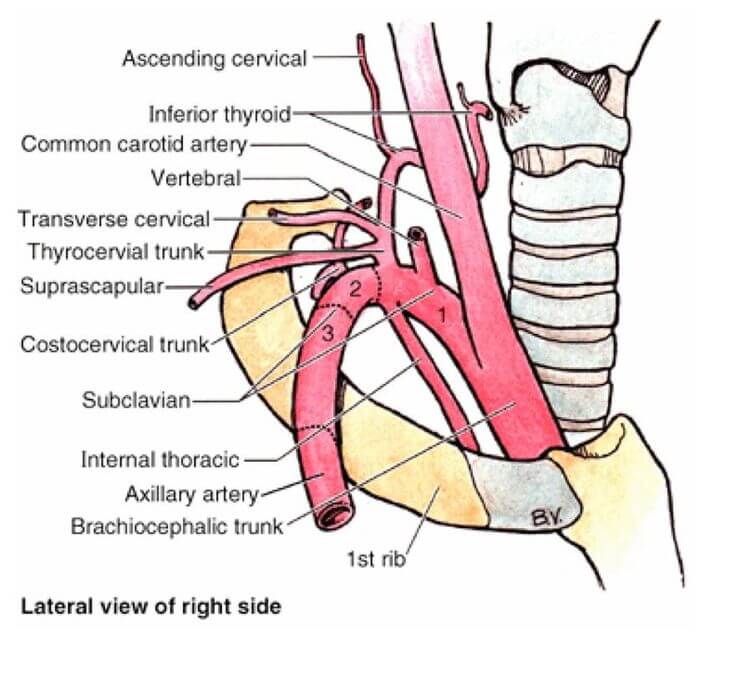Origin of Subclavian artery: Left: Arch of aorta Right: Brachiocephalic artery Extent of Subclavian artery: Arises posterior to sternoclavicular joint and ends at outer border of 1st rib by becoming acillary artery. Divisions of Subclavian artery: 3 parts in relation to Scalenus anterior muscle 1st part (medial to muscle) 2nd…
Tag: Cardiovascular system
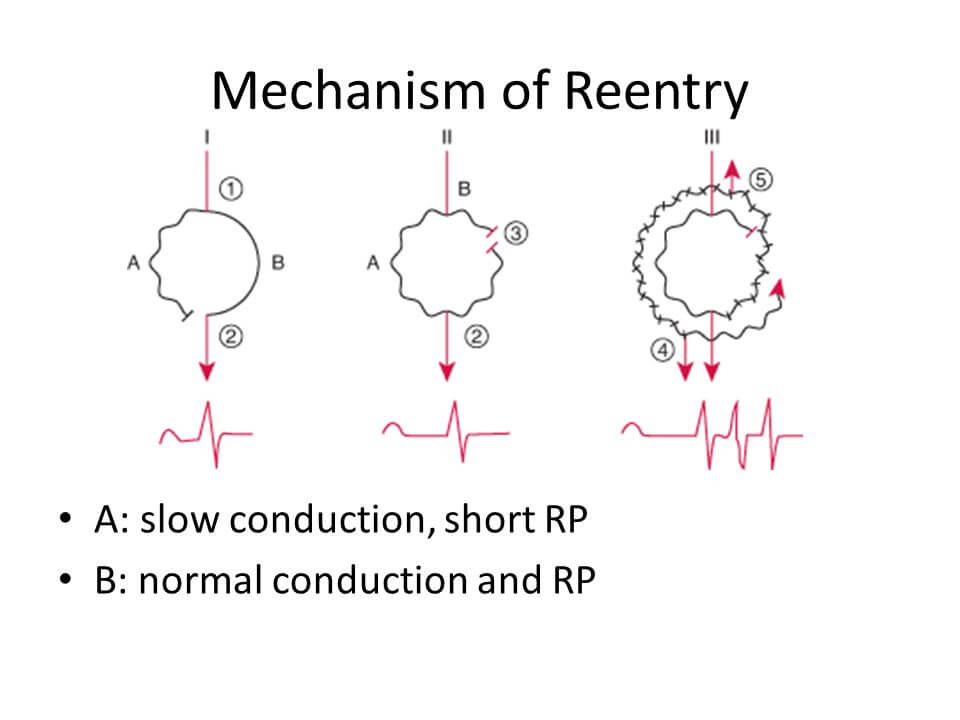
Short Approach to SVT and AVNRT management
This is an ECG from a patient who came with a complaint of palpitation: Analyze the ECG: Rhythm: Regular Heart rate: Around 170/min QRS: Around 0.08 s i.e. ≤0.1 s (narrow QRS complex) ECG diagnosis: Regular Supraventricular Tachycardia (SVT) Now, look for P waves – There are no P waves In…
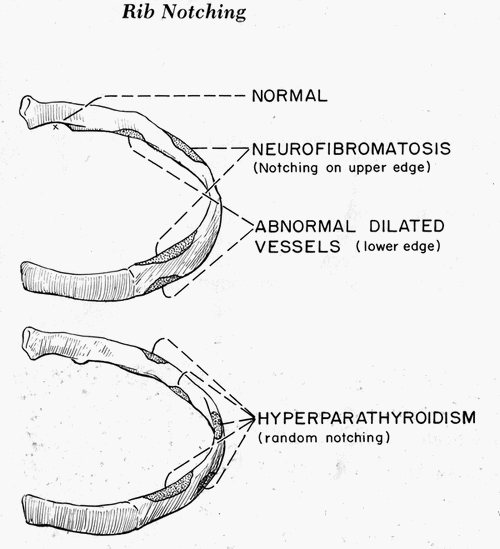
Rib Notching
Normal Rib Notching A small notch near the costo-vertebral joint is normal, so pathologic rib notching is more likely if the notching is more lateral. Types of Pathological Rib Notching 1. Superior rib notching 2. Inferior rib notching (more common) Inferior Rib Notching (Roesler’s sign) Mechanism: Enlargement of one or…
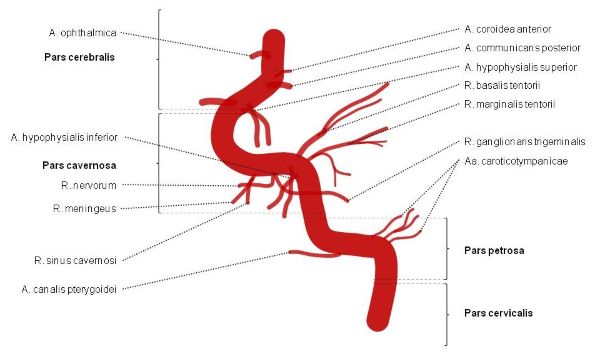
Internal Carotid Artery – Segments and Branches
7 segments of Internal Carotid Artery We have already discussed a mnemonic to remember the course of Internal Carotid Artery with the help of 2 horizontal “S” under the topic of Circle of Willis. C1 – Cervical segment C2 – Petrous (horizontal) segment C3 – Lacerum segment C4 – Cavernous…
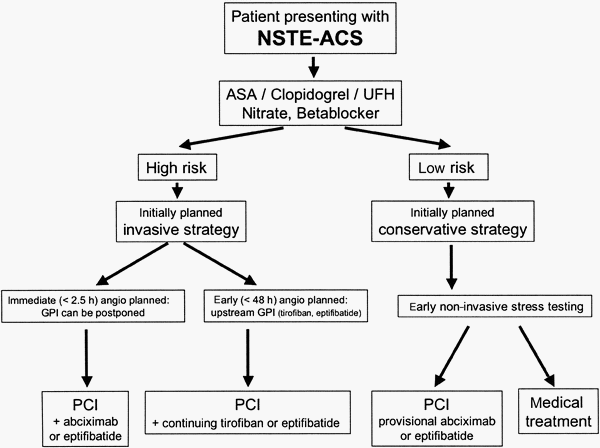
NSTEMI : Early Medical Management Pearls
Antiplatelet therapy Aspirin 2-4 non-enteric coated chewable baby aspirins (81 mg each) – buccal absorption is the fastest for platelet inhibition. Initial dose: 150 mg – 325 mg Daily dose: <150 mg For patients unable to take oral medications: Rectal suppository 325 mg Avoid in acute MI: Enteric coated preparations…
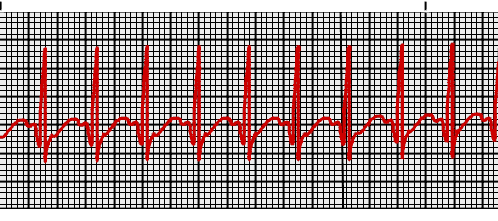
Supraventricular Tachycardia vs Sinus Tachycardia
Yesterday, I had encountered a tachycardic patient with heart rate 160/min. Somewhere in medical school, I was taught that the sinus tachycardia with heart rate >160/min must be considered as a Supraventricular tachycardia (SVT). With such misinformation, it was easier for me to overlook the fact that the patient was…
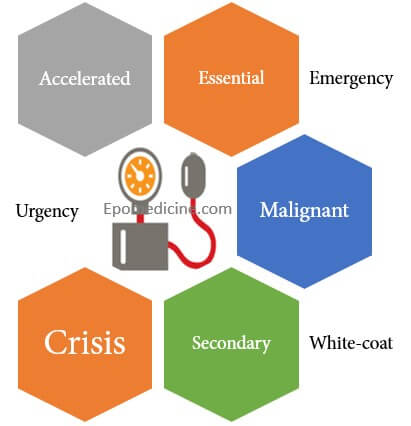
Terminologies of Hypertension
There are various terminologies used to describe hypertension which may overlap and are a source of confusion to the medical students and health professionals. Essential or Primary or Idiopathic hypertension Hypertension in which secondary causes have been excluded. Identifiable etiologic factors of essential hypertension: Obesity Insulin resistance High alcohol intake…
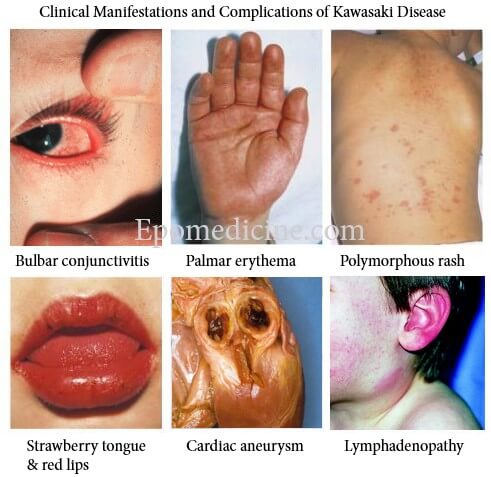
Kawasaki Disease – Diagnostic Criteria Mnemonic
The diagnostic criteria of Kawasaki Disease can be remembered using a mnemonic – “FEBRILE“. Fever: >5 days plus ≥4 of the following Enathem: Lips: Erythema, fissuring or crusting Oropharynx: Diffuse injection Tongue: Strawberry tongue Bulbar conjunctivitis: Bilateral, painless and non-exudative Rash: Polymorphous rash Internal organ involvement (not the part of criteria)…
